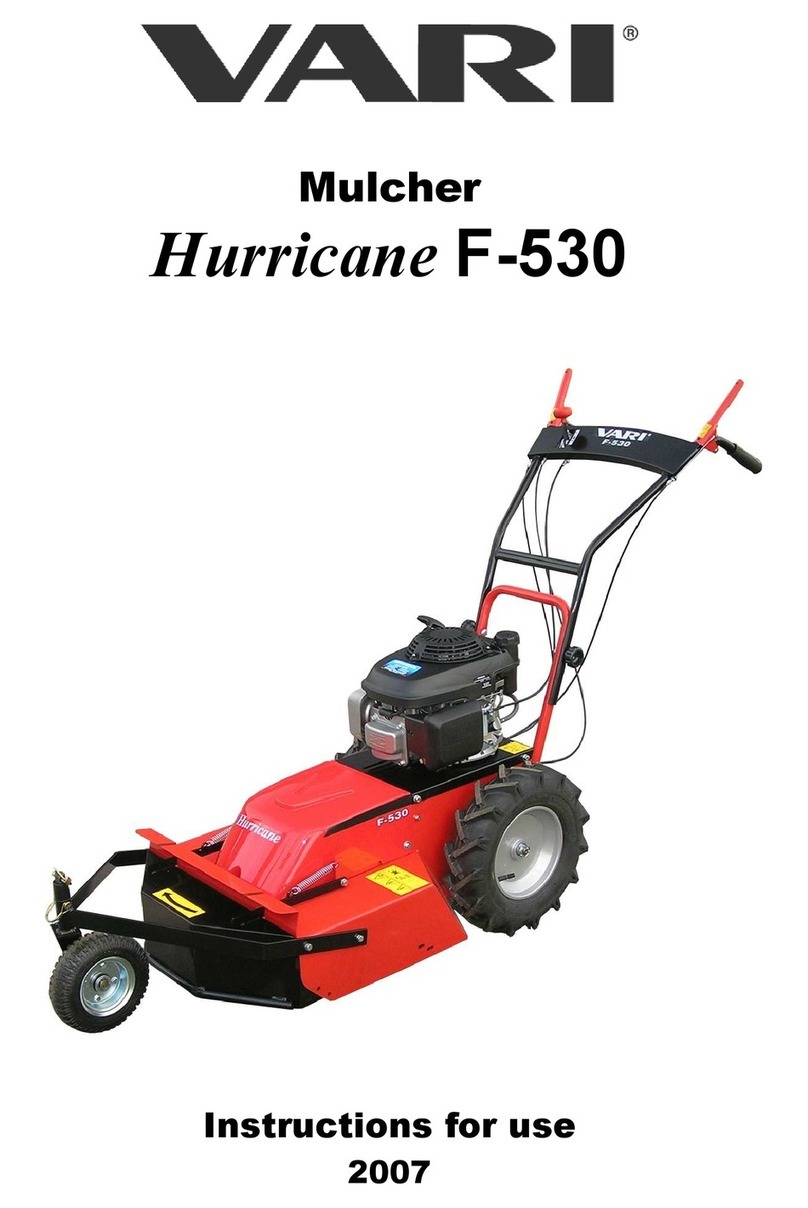F-600
2
Contents
1 Basic information. ..............................................................................................................3
2 Foreword.............................................................................................................................4
2.1 Warning ......................................................................................................................4
3 Operation safety..................................................................................................................5
3.1 Safety regulations. ......................................................................................................5
3.2 Declared noise and ibration alues...........................................................................6
3.3 Safety pictographs. .....................................................................................................6
4 Use, technical specifications and technical description of the machine.............................8
4.1 Machine use................................................................................................................8
4.2 Technical specifications. ............................................................................................8
5 Instructions for use. ............................................................................................................9
5.1 Machine assembly. .....................................................................................................9
5.2 Adjustment of handlebars.........................................................................................10
5.3 Putting into operation. ..............................................................................................11
5.4 Starting the cutting blade..........................................................................................11
5.5 Machine tra el forward and back. ............................................................................11
5.6 Machine stop.............................................................................................................12
5.6.1 Stopping on the plain........................................................................................12
5.6.2 Stopping on the slope .......................................................................................13
5.7 Working with the machine. ......................................................................................13
5.7.1 Adjustment of cutting height ............................................................................13
5.7.2 Tra el speed choice ..........................................................................................14
5.7.3 Sward cutting....................................................................................................15
5.7.4 Problems at cutting ...........................................................................................15
5.7.5 Cutting on slopes ..............................................................................................15
5.7.6 Machine transport by road................................................................................16
6 Maintenance, care and storage..........................................................................................16
6.1 Machine lubrication..................................................................................................16
6.1.1 Gear oil change and replenishment ..................................................................16
6.1.2 Engine oil replacement .....................................................................................16
6.2 Tightening of bolted connections. ............................................................................17
6.3 Working blade replacement and sharpening. ...........................................................18
6.4 Replacement of V-belts and adjustment of tension pulleys. ....................................18
6.4.1 Replacement of V-belts ....................................................................................18
6.4.2 Adjustment of tension pulleys ..........................................................................19
6.5 Setting up pulley wires, blade brake.........................................................................21
6.6 Adjustment of the automatic brake...........................................................................22
6.7 Table of ser ice operations.......................................................................................23
6.8 Diagnostics of dri ing problems...............................................................................24
6.9 Washing and cleaning of the machine......................................................................24
6.10 Machine storage........................................................................................................24
6.11 Disposal of packaging and machine after the end of ser ice life. ............................25
7 Instructions for ordering spare parts.................................................................................25
8 Contact to manufacturer. ..................................................................................................25
9 The list of parts.................................................................................................................25
10 Letter of Guarantee.......................................................................................................40
Text and illustrations c 2005 VARI,a.s.
Publication No. VL-104-2005
Year on the front page is the year of Manual printing





























